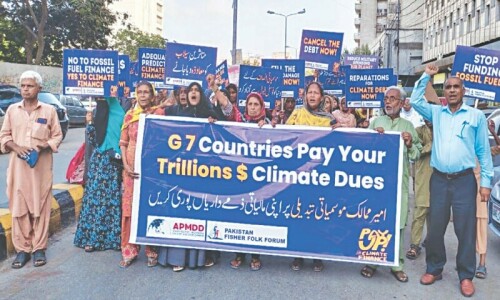UNITED NATIONS: The first-ever model-based estimates of unintended pregnancy and abortion rates for 150 countries shows major disparities in access to sexual and reproductive health care.
The UN’s Human Reproduction Programme (HRP), the World Health Organisation (WHO) and a WHO partner Guttmacher Institute jointly released the report on Thursday, highlighting the discrepancies. The study analyses rates from 2015 to 2019, with the aim of providing deeper insights into access to sexual and reproductive health services in countries of all income levels across the globe.
The data used for the study shows that the prevalence of unintended pregnancies in Pakistan is between 16-46 per cent. Women in Pakistan have an estimated 3.8 million unintended pregnancies each year, most of which result from unmet need for modern contraception. About 52pc of married women of reproductive age (15–49) who want to avoid a pregnancy are not using a modern contraceptive method.
Says women in Pakistan have an estimated 3.8m unintended pregnancies each year
“If all unmet need for modern contraception were met, there would be 3.1 million fewer unintended pregnancies annually, 2.1 million fewer induced abortions and nearly 1,000 fewer maternal deaths,” says an earlier report by the Guttmacher Institute.
Modern contraceptive services and maternal and newborn health care are essential for protecting the health of Pakistani women, their families and communities.
The report released on Thursday shows that the greatest variations in unintended pregnancies are in Latin America where the rates ranged from 41 to 107 per 1,000 women, and in sub-Saharan Africa, where the range was 49 to 145 women per 1,000.
The report points out that the disparities are not shaped purely by income-level: in Europe, for example, most countries with higher unintended pregnancy rates than the regional average are classified as high-income, while the two countries with the lowest estimates are middle-income. The finding reflects how barriers to accessing and using effective sexual and reproductive healthcare exist in settings with greater as well as fewer resources.
“These variations speak to the need for investment, even in regions with low unintended pregnancy rates,” says Jonathan Bearak, a senior research scientist at Guttmacher Institute and lead author of the article. He also underlines the need to empower women and girls across countries to choose under what circumstances they want to have children.
“The proportion of unintended pregnancies ending in abortion — as great as 68pc, even among countries that completely prohibited abortion—illustrates the strength of the desire of millions of women and adolescents to avoid unplanned childbearing,” the author argues.
Published in Dawn, March 26th, 2022















































